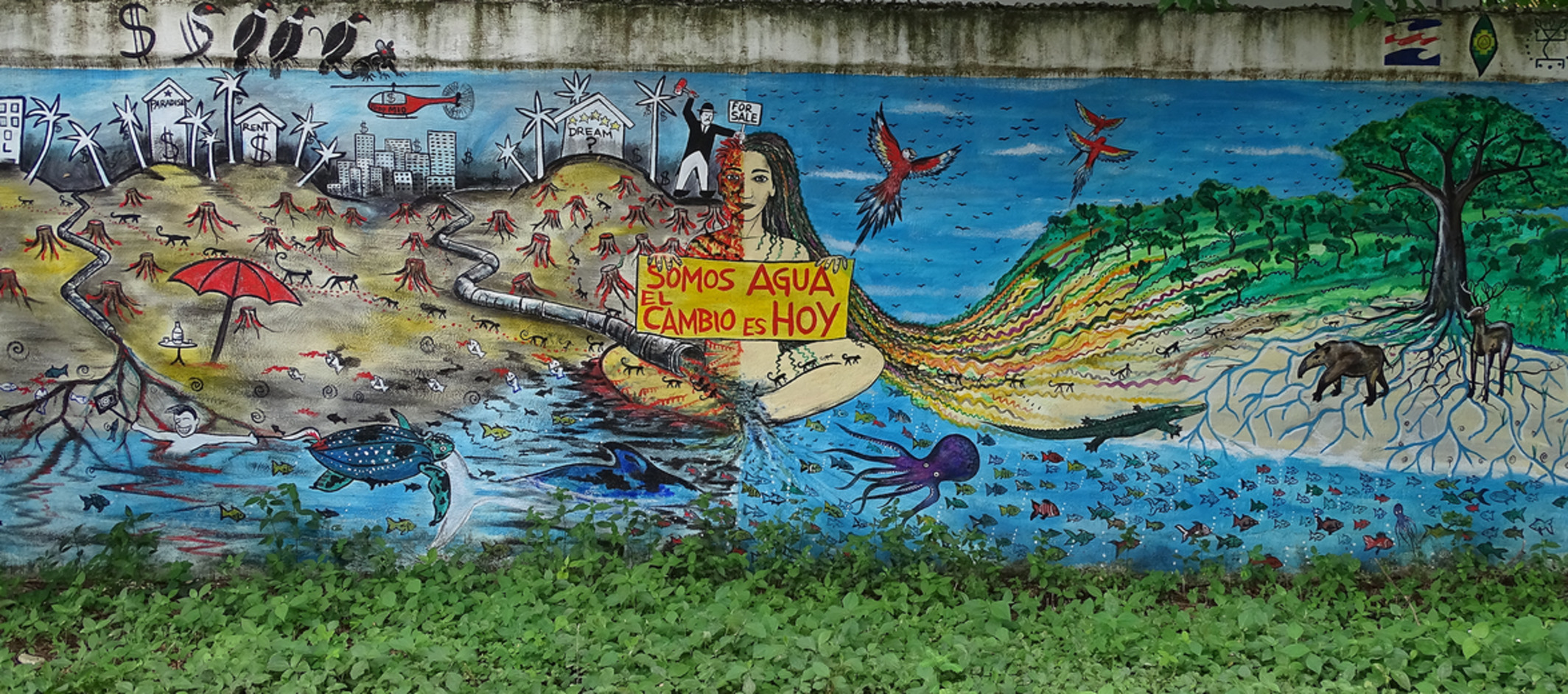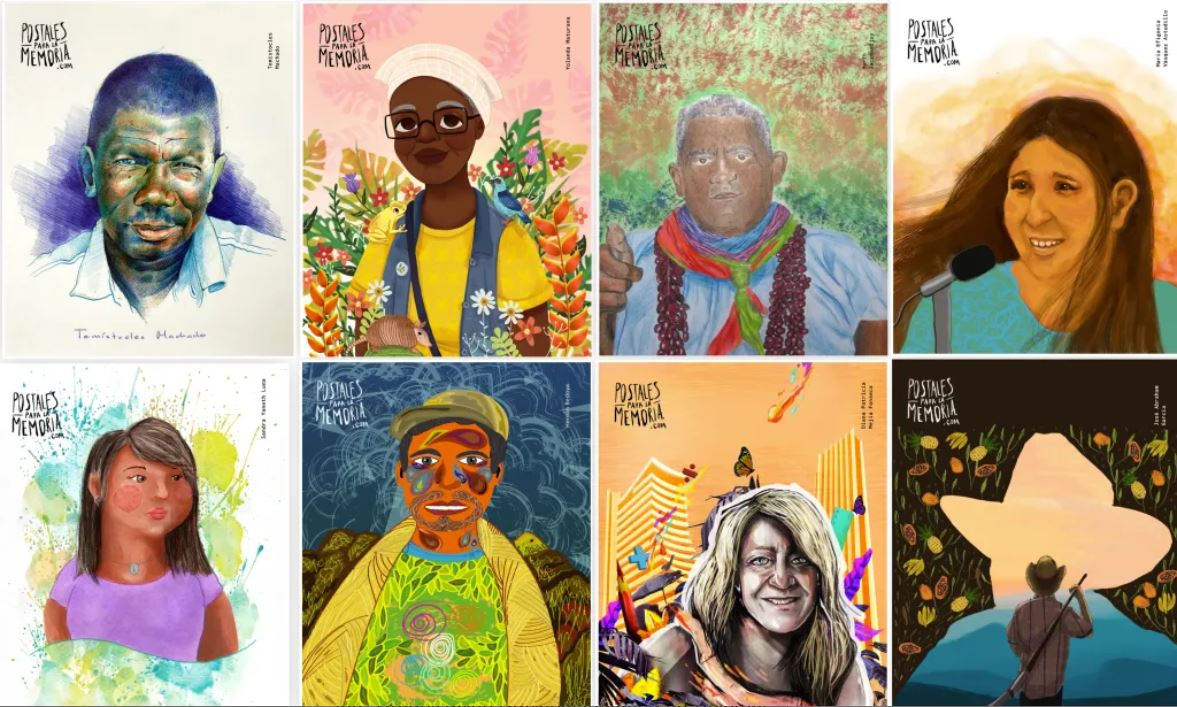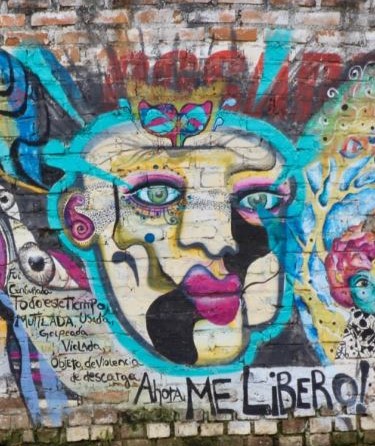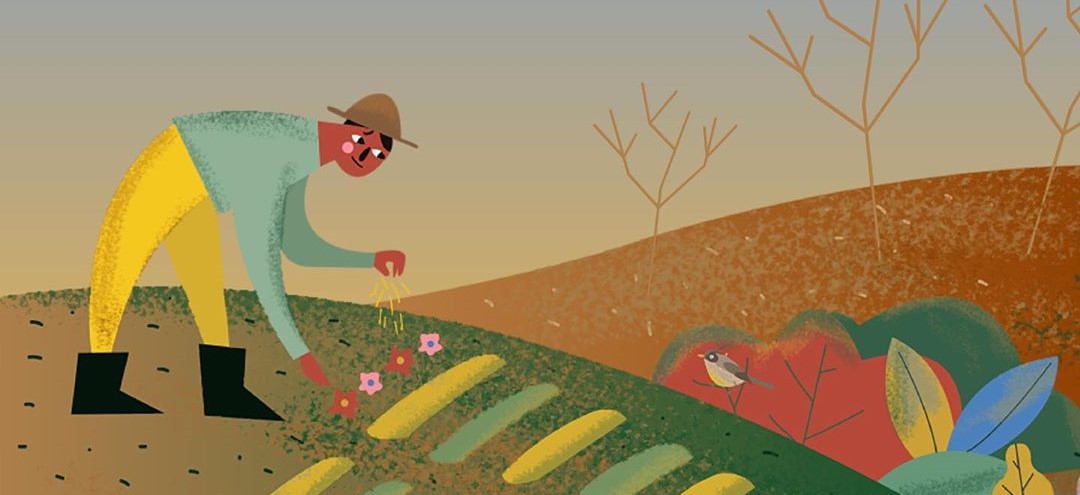When It Rains it Pours
Gardeners know the paradox: dry soil does not effectively absorb water. In that same vein, neither does scorched earth. So, after the drought comes the flood – statistically speaking. Then, flood waters wash away top layers of soil. This is called erosion. Ironically, eroded land is less capable of storing water and is therefore more susceptible to flooding. In this cycle, lush rainforests are stripped into deserts.
Climate Change is Shrinking Land Supply
As climate change both intensifies drought and aggrandizes flooding through precipitation patterns and melting glaciers, the World Bank predicts that global warming will induce widespread desertification in Colombia.
According to the Institute for Hydrology Meteorology and Environmental Studies (IDEAM), 40% of Colombian territory is already experiencing some degree of degradation due to erosion. Moreover, by 2012, full blown desertification had already taken more than 24% of the country’s land mass. Thus, arable land in Colombia is very clearly and quickly disappearing.

In “Landscape of Change” Jill Pelto uses climatology charts and watercolors to demonstrate the impact of climate change on land.
Inequality Abounds
Meanwhile, the richest 1% own 80% of the land. Many of these wealthy estate owners are cattle ranchers. It is important to note that cattle ranching is often falsely cited as proof of land use – necessary under Colombian law for land procurement. This fraudulent claim enables the performance of land speculation. As climate change heightens arable land scarcity, hoarding land becomes increasingly profitable. Unfortunately, this incentivises a rush to log the Amazon.
However, climate change does hurt legitimate ranchers in a way that also fuels deforestation. Global warming accelerates the pace at which these producers exhaust their soil  resources. This past decade, the livestock industry alone lost $1.8 billion due to the El Niño-Southern Oscillation (ENSO). In the face of climate change, scientists predict ENSO will only grow more severe. Unfortunately, “climate and soil characteristics,” limit viable pasture-expansion options. Ranchers can only expand into areas with agro-ecological potential. Cue deforestation.
resources. This past decade, the livestock industry alone lost $1.8 billion due to the El Niño-Southern Oscillation (ENSO). In the face of climate change, scientists predict ENSO will only grow more severe. Unfortunately, “climate and soil characteristics,” limit viable pasture-expansion options. Ranchers can only expand into areas with agro-ecological potential. Cue deforestation.
It is important to note here that by refusing to enact the rural reform integral to the Peace Accords, the Colombian government has enabled widespread and accelerating deforestation. Before the Peace Accords were signed in 2016, the rebels utilized forage coverage as a tool in war. As such, they strictly limited deforestation. When the Peace Accords were signed and FARC strongholds were disbanded, the indigenous were promised this land. However, cattle ranchers and other large scale profiteers were also eyeing the territory. When the government then rejected to protect indigenous land rights, big businesses swooped in. Today, 60% of deforestation in Colombia is caused by land-grabbing. While climate change exacerbates land scarcity, government neglect allows unchecked greed to drive violence against people and the earth.
The Impacts of Deforestation
Deforestation worsens drought. As Nick Nuttal, the spokesperson for the United Nations Environment Programme (UNEP) summarized, forests “drill water…into underground aquifers where it is stored to supply rivers during drought.” At the same time, deforestation may even cause drought. According to Nuttal, trees “pump ground water into the sky [where] the moisture then condenses and falls as rain.” Thus, without trees, precipitation is limited.

Dr. Sheil of the Norwegian University of Life Sciences expands, in “areas like the Congo and the Amazon, the forests cause rainfall… if they weren’t there the interior of these continental areas would be deserts.” Indeed, a study conducted by scientists at the University of Leads found, “air that passed over extensive vegetation… produces at least twice as much rain as air that has passed over little vegetation.”
Deforestation also reduces groundcover and removes soil, which further stunts the earth’s ability to absorb and store water. This, as stated above, increases the likelihood and severity of flooding. Of course, deforestation also deprives Colombia of carbon sinks and emits greenhouse gas emissions. Remember, cutting trees releases CO2.
As climate change, greed and a surging global demand for meat and other Colombian resources drive deforestation; deforestation drives climate change. Moreover, deforestation independently increases the likelihood of desertification, which once more incites deforestation. Here, we are seeing a loop of intertwined factors continuously amplifying each other. Only action and activism can stop the cycle. But the activists are being slaughtered.
Violence for Hire
The heart of Colombia’s conflict has always been land. Now, climate change is pumping more blood into that heart. As competition for land heightens, cattle ranchers, palm oil producers banana growers and other rural giants are increasingly hiring individuals from the drug cartel and right-wing neo-paramilitary group AGC. The AGC members are paid to intimidate threaten and kill community leaders who dare to defend their own land.

Illustrations of Temistocles Machado, María Yolanda Maturana, Mario Jacanamijoy Matumbajoi, Maria Efigenia Vásquez Astudillo, Sandra Yaneth Luna, Luis Hernán Bedoya Úzuga, Diana Patricia Mejía Fonseca, and José Abraham García. They are part of the group of 442 social leaders assassinated between Sept 2016 and March 2020. Illustrations taken from the website of the project PostalesParaLaMemoria.com
The Meta Department
At the intersection of the Amazon, the Andes and vast low land plains, the Meta Department is home to large scale cattle ranching, petroleum and the precious resource coltan. As such, it is the 7th most dangerous Department in all of Colombia for land rights defenders.

Translated from Spanish, this mural from La Macarena reads “I was censored all this time. Used, beaten, violated – an object of discarded violence. Now, I break free!”
The town of La Macarena, in Meta has been hit especially hard. To protect the earth, Erley Monroy Fierro spearheaded the Losada-Guayabero Environmental Campesino Association (ASCAL-G). As a result, he was murdered. On the way home from Monroy’s funeral, fellow activist Hugo Cuéllar was killed. After that, the town lost Didier Losada Barreto to environmental violence. The list goes on. And on.
Yet, the people of La Macarena are resilient. They are the grandchildren of those displaced in waves from colonialism and La Violencia. They’ve survived FARC kidnappings and extrajudicial killings; in their soil rests an estimated 2,000 unidentified bodies. The people of La Macarena have lived through flooding so severe a national emergency was called, and drought so intense, their river closed. Yet, the people of La Macarena protect the earth. This community, constructed by war, will not be displaced again.
The Unsung Heroes
Unfortunately, members of the AGC are not the sole perpetrators. Rumors of FARC, ELN and even state-sanctioned assassins abound. The violence is epidemic. Colombia is the deadliest country on earth for environmentalists. Last year, more environmentalists were murdered across the globe than ever before. Over half of the killings occurred in either the Philippines or Colombia.
We must understand that in protecting the Amazon, these brave grassroots leaders are protecting all of us.
Experts warn that further Amazon recession would likely cause dire, global consequences. The forest stores a baseline of 100 billion tons of carbon and single-handedly eats 5% of total emissions annually. Moreover, “the water evaporated from Amazon trees absorbs energy when it evaporates – cooling the planet just as people are chilled by evaporating water when they are wet.” Thus, the Amazon acts as a pseudo AC system for the planet.

Cover of report, “Defending Tomorrow: The climate crisis and threats against land and environmental defenders” published by Global Witness on July 29th, 2020
We have a responsibility to back land rights defenders, such as Nidia Becerra who has received hundreds of death threats, who was shot, who now wears a bulletproof vest in public, who has been forced to relocate often, and who reaffirms that climate activism and indigenous activism are intrinsically linked. Make no mistake, Nidia is saving the world. We must fight for Nidia because she has put everything on the line for us.
Posted By Alex Mayer
Posted Aug 4th, 2020



1 Comment
Iain Guest
August 6, 2020
Such a rich, well-written and scary blog. You’re right – Nidia and the other defenders are true heroes. Reading this, I wonder how one starts to put together a coordinated response and what is the best way we in the north can respond.